About this detail of the Tiger
The top of the drum cupola was a circular armour plate, with a round hole for the hatch. At 460mm diameter [1] , this hole was exactly the same size as the crew hatch holes in the hull top.
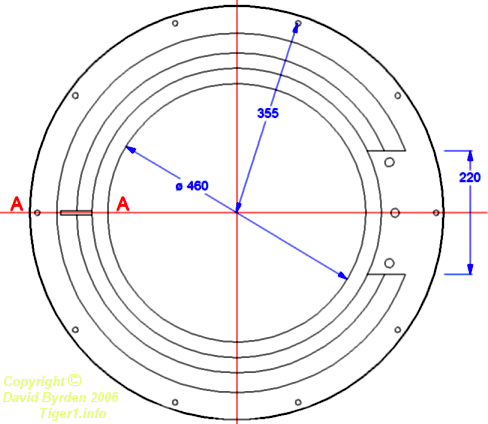
This diagram is a plan of the armour plate. It was held in place by 10 evenly spaced bolts. There was an eyelet welded at one point (labelled A-A), allowing the hatch lid to be padlocked.
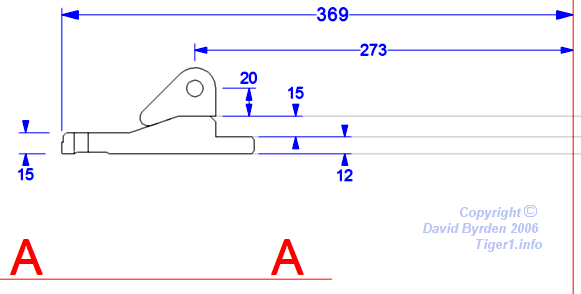
This is a section of the plate at the location labelled A-A. The eyelet is shown. The raised ridge provided splash protection for the hatch lid. There was a 220mm gap in this ridge, allowing the hinge to be attached.
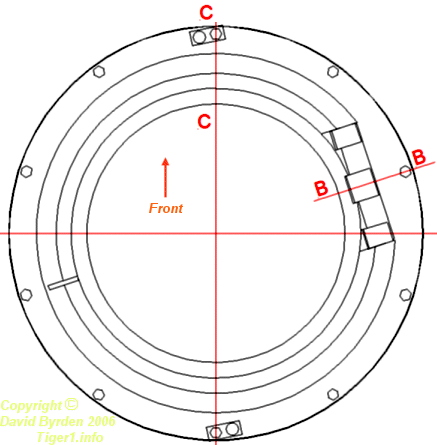
This plan shows how the plate was oriented within the cupola. It also shows part of the hinge for the hatch lid.
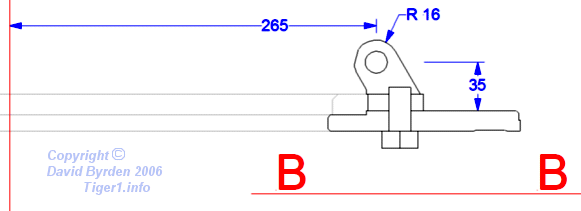
This section through (B-B) shows how the hinge was attached by three large bolts from below. This part of the hinge comprised three eyelets welded to a rectangular plate.
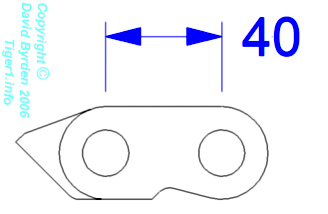
The hinge for the lid was designed with two axles, 40mm apart. Two small connecting links, as shown above, linked the parts of the hinge.
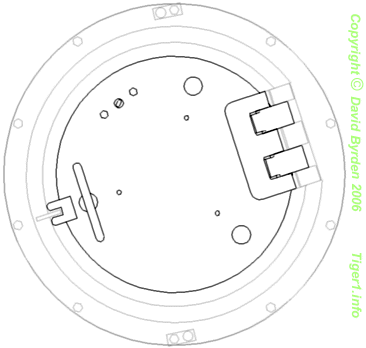
This diagram shows how the two links connected the parts of the hinge.

Because it had a rubber sealing ring around its edge, the hatch did not fit precisely into the seating plate. A hinge with a single axle might not have allowed the lid to be screwed down tightly, thus defeating the waterproof seal.
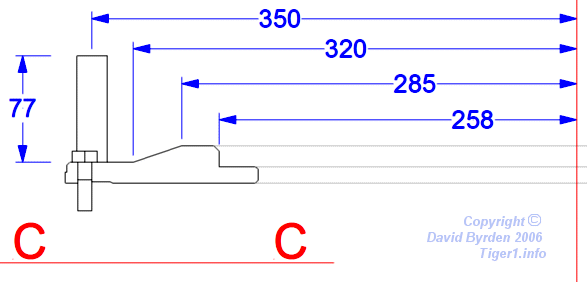
To provide protection from rain with the hatch lid open, a simple umbrella was designed for the cupola [3] . It stood on two legs which were slotted into two hollow tubes. The tubes were attached to the front and rear bolts and spaced exactly 700mm apart. This section through (C-C) shows one.
The umbrella is very rarely seen in photographs of Tigers. In some cases, the tubes seem to be missing. They may have been removed because they could have caused injury to the commander.
[1] Survey of Tiger 250122, at Bovington museum, by David Byrden
[3] DW to Tiger 1